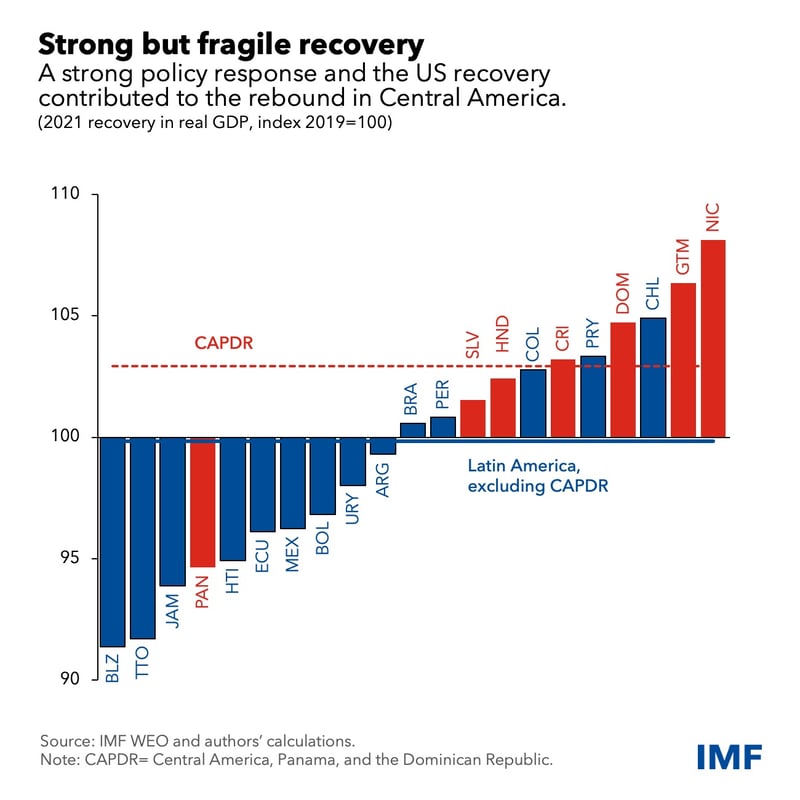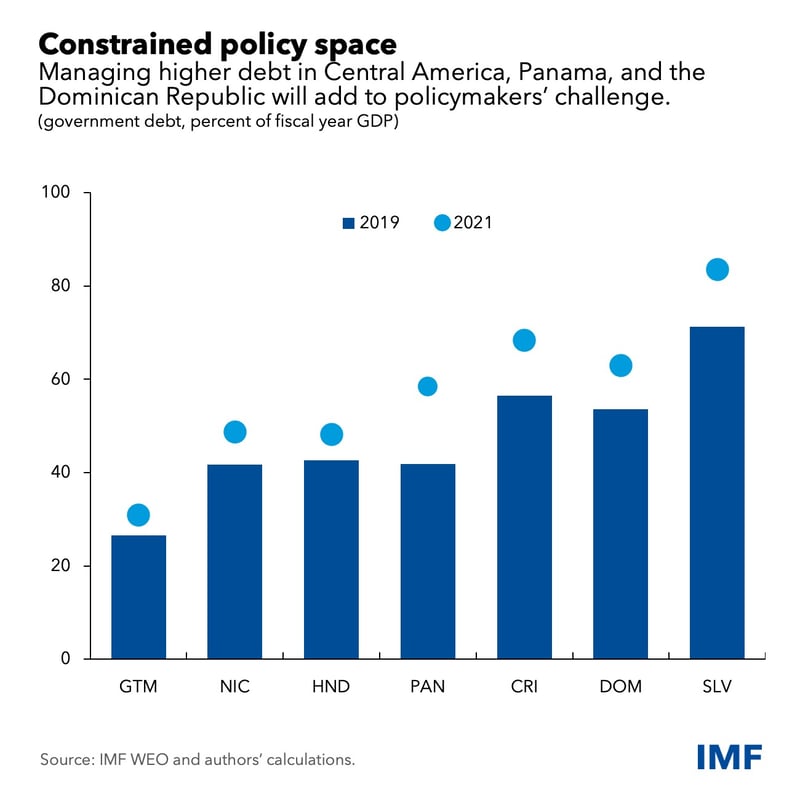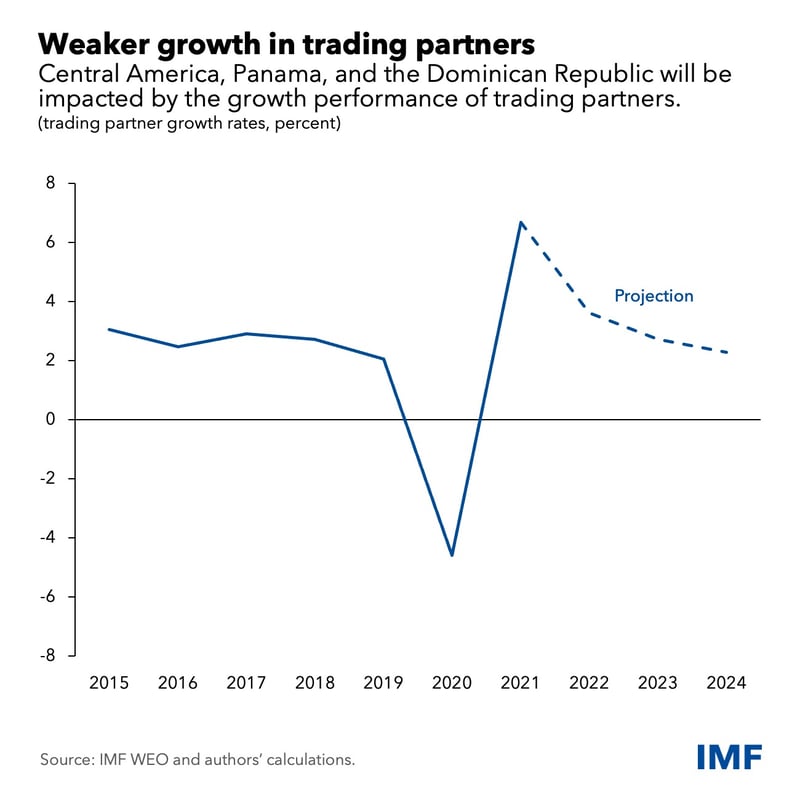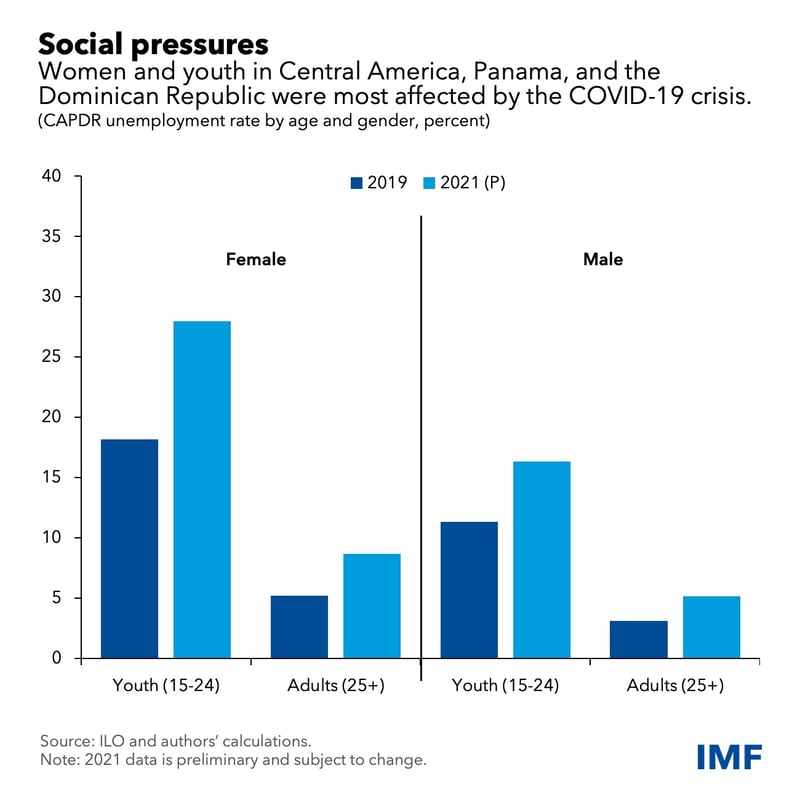Central America: Seeking Resilient Growth and Social Cohesion in the Aftermath of Shocks
July 5, 2022
Related Links
Central America is no stranger to large shocks. The region was once one of the most volatile in the world, the scene of civil and political upheaval. More recently, it has been hit by natural disasters, on top of the COVID-19 pandemic. After each shock, the region has managed to recover as it seeks new beginnings. Policymakers have now a unique opportunity to implement reforms that will steer the region’s economies onto a path of more resilient and inclusive growth, while addressing their citizens’ crucial needs.
Fragile recovery
Since the onset of the pandemic, the economies of Central America, Panama, and the Dominican Republic (CAPDR) were among the best performers in Latin America. By 2021, all except Panama had surpassed the pre-pandemic output levels.

This strong recovery was partly a result of the authorities’ fast, comprehensive, and in many cases, unprecedented policy responses. These included historical cuts to monetary policy rates to help support economic activity and a sharp expansion of social support and health spending. External factors, such as the US recovery, amid the region’s relatively high openness and reliance on remittances, also contributed to the recovery.
As it battled the pandemic, the region was also hit by hurricanes Eta and Iota, reminders of its vulnerability to climate change. Affected countries once again responded with swift support to the population and began reconstruction.
Just as the recovery was taking hold in 2022, the region is now affected by the worldwide ramifications from the war in Ukraine, most concretely through higher fuel and food prices. The authorities have again responded with spending and tax measures to protect the nascent recovery and support the population, particularly the most vulnerable.
These multiple shocks are projected to leave scars on the region’s level of GDP. While the negative impact on GDP is less than in 2021 projections, it is larger than in advanced economies.
A test of resilience
The region’s economic prospects are now subject to an unusually high degree of uncertainty. A potential confluence of adverse global factors could once again put economies’ resilience to a test at a time when policymakers have little room for maneuvering, in the face of higher debt, among other factors.

These factors include: the further volatility of commodity prices amid the region’s high reliance on fuel imports; weaker growth in trading partners, including the US; tighter financing conditions due to faster increases in global and domestic interest rates; and a further moderation of remittance inflows, a lifeline for some economies.

Opportunity for a new, stronger beginning
The region now has a unique opportunity to renew its focus on a critical set of reforms to improve social conditions and reverse the deterioration of pre-existing problems, such as high and persistent unemployment, poverty, and inequality—all of which have fueled migration.

Policymakers should focus on creating employment opportunities by increasing flexibility in labor markets—especially for women and youth who were most affected by the crisis—investing in infrastructure that is resilient to climate events, and advancing their digitalization agenda, across both the public and private sectors, which will make the region more competitive.
The process will take time—this makes it all the more important to put in place strong domestic policies to improve resilience before the next shock knocks on the door.
****
Metodij Hadzi-Vaskov is the Regional Resident Representative for Central America, Panama and the Dominican Republic.
Joyce Wong is the Mission Chief for Honduras.



